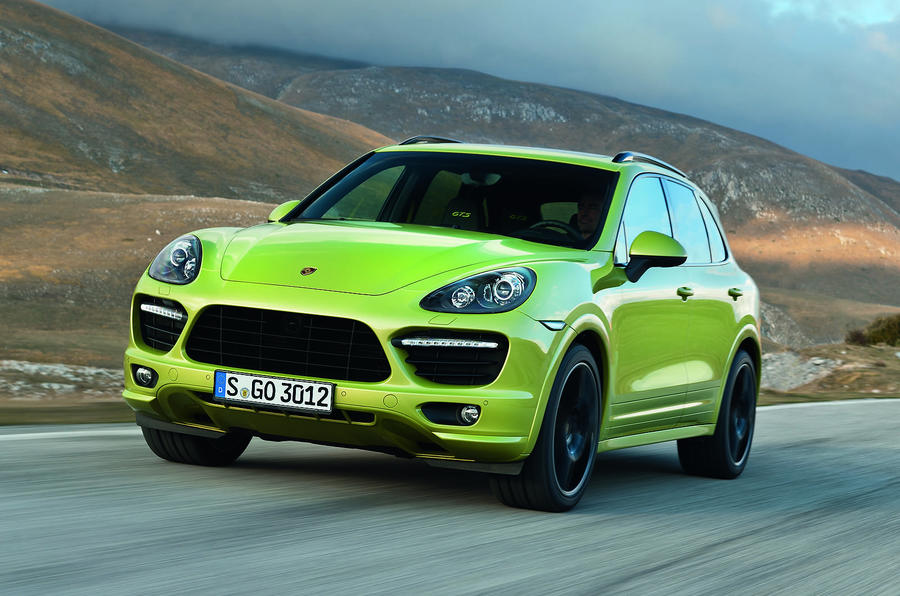What is it?
This Cayenne GTS is the second generation of the more driver-focused of Porsche’s two go-faster SUVs. Unlike the Cayenne Turbo (which has two puffers attached to its V8), the GTS uses a normally aspirated, but highly tuned, V8. The GTS gives away 79bhp and a considerable 136lb ft of torque to its forced-induction sister car, but is only one second slower to 60mph and around 10 per cent more economical on the official EU cycle.
This is not an obscure niche model. Porsche sold 15,766 units of the previous-generation car, accounting for a full 17 per cent of all Cayenne sales during the time it was in the showroom.
This time around, the GTS is a healthy 160kg lighter and offers marginally more power (20bhp) and torque (11lb ft), while the CO2 output is down from 332g/km to 251g/km.
The engine has been modified with higher-lift valves (up 1mm to 11mm), stronger valve springs, reshaped camshafts and new engine management. When in Sport mode, the pulses of engine intake noise are directed into the cabin by the Sound Symposer, which channels noise up inside the A-pillars. Electronically controlled flaps in the rear silencer add to the volume.
On the standard-issue steel springs, the GTS sits 24mm lower than the Cayenne S, or 20mm lower if you tick the option box for the air suspension. Standard on the steel-sprung car is Porsche Active Suspension Management, a three-stage (Comfort, Normal, Sport) switchable active damping system. The air suspension can be set at five different height levels. Twenty-inch wheels are standard, although our test car was fitted with 21s.
Our test car was also fitted with Porsche’s optional PDCC anti-roll system. This uses hydraulic swivel motors which, using the steering angle and lateral acceleration as a guide, twist one end of the anti-roll bar in relation to the other, quelling body lean. Porsche says it has speeded up the changes of the eight-speed automatic gearbox and the final drive ratios on the front and rear axles are shorter for more responsive performance.
Inside, the cabin gets a mixture of leather and Alcantara and substantial eight-way-adjustable sports seats. The rear bench is shaped for two passengers. The exterior styling – with its body-coloured extensions and gloss black trim – can hardly be missed.















Join the debate
Add your comment
The "insane progression" of the Turbo is a great appeal...
The second gen Cayenne is a very good car. The looks aren't exactly for all tastes but it feels a lot lighter and nimbler to drive. It is agile but the incredible trust of the turbo is great. The only gen 2 Cayenne I tried was a turbo and if I was looking for V8 powered petrol SUV I would want that kind of "progression". I also think that in real world use the mpg may be identical.
Tractors!
Come on spoiled Autocar journos, you don't need a Porsche GTS to overtake a tractor!
I'd Buy One ...
... But NOT in that colour!